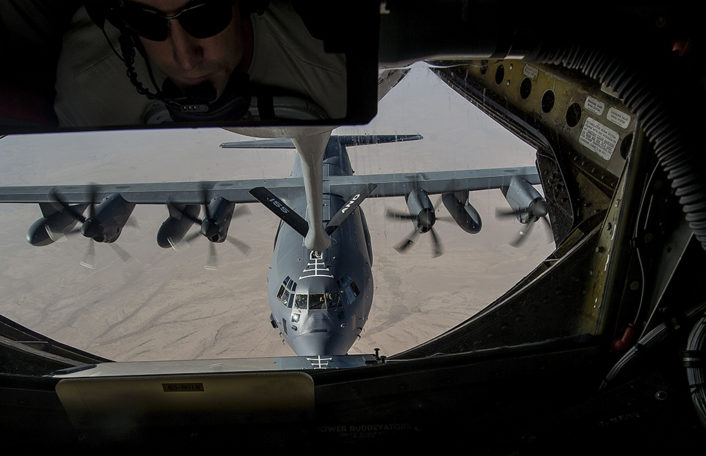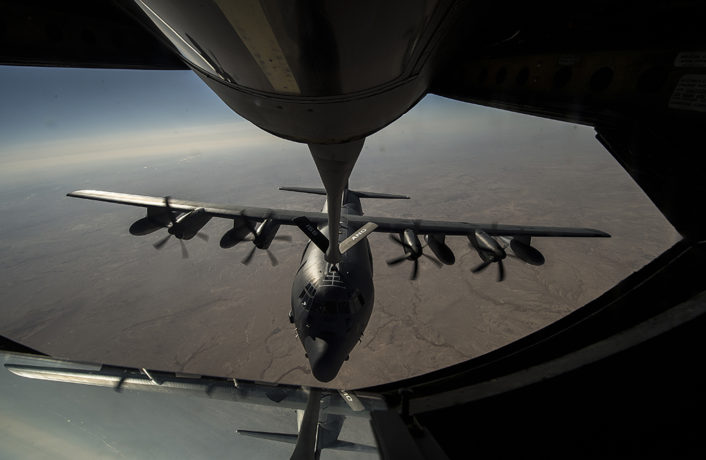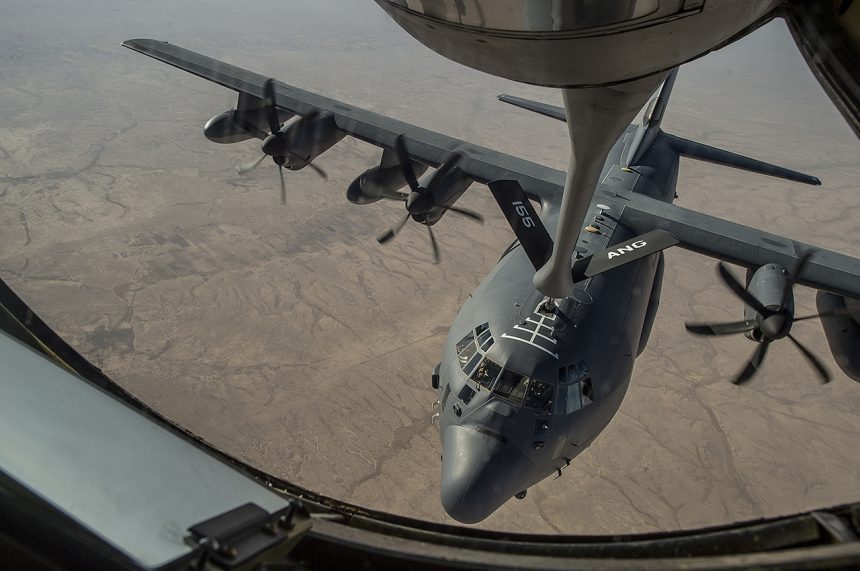Here is the first in theater (Iraq/Syria) picture of an AFSOC MC-130J Commando II.
The top image shows a U.S. Air Force MC-130J Commando II receiving fuel from a 340th Expeditionary Air Refueling Squadron KC-135 Stratotanker during a flight in support of Operation Inherent Resolve.
The photograph was taken by Staff Sgt. Trevor T. McBride on May 29, 2017, and it is particularly interesting because, as our friends at @Airwars noticed, this is the first time the multimission combat transport/special operations tanker, assigned to the Air Force Special Operations Command (AFSOC), is depicted flying in support of OIR against the Islamic State in Iraq and Syria.

The MC-130J Commando II, that has replaced the MC-130N/P Combat Shadow II aircraft, is the modern special operations variant of the Hercules, whose primary roles are HAAR (Helicopter Air-to-Air Refueling) of SOF helicopters/tilt rotor aircraft, infiltration, exfiltration and resupply of SOF by airdrop or landing on remote airfields. Interestingly, the aircraft can also be used for FARP (Forward Air Refueling Point) operations to perform covert, nighttime refueling operations in deployed locations where fueling stations are not accessible or when air-to-air refueling is not possible.
The MC-130Js mainly operate at low-altitude and at night, conducting clandestine missions with reduced probability of visual acquisition and intercept by airborne threats.
According to the U.S. Air Force, the MC-130J features an advanced two-pilot flight station with fully integrated digital avionics; fully populated Combat Systems Operator (CSO) and auxiliary flight deck stations; 13 color multifunctional liquid crystal displays; head-up displays; fully integrated navigation systems with dual inertial navigation system and global positioning system; integrated defensive systems; low-power color radar; digital moving map display. The aircraft is equipped with new turboprop engines with six-bladed, all-composite propellers; digital auto pilot; improved fuel, environmental and ice-protection systems; enhanced cargo-handling system; Universal Air Refueling Receptacle Slipway Installation (UARRSI), air refueling pods, Electro Optical/Infrared (EO/IR) System; dual SATCOM for voice/data; 60/90 KVA generators; increased DC electrical output, loadmaster/scanner restraint system; and LAIRCM provisions.

As mentioned before, this kind of asset is capable to perform many tasks, therefore it’s difficult to guess what kind of mission it was flying when it was photographed. For the moment, we can just say that the Commando II has joined the air war over Syria and Iraq bringing the ability to support a wide variety of special operations against Daesh.
H/T @Airwars for the heads-up









